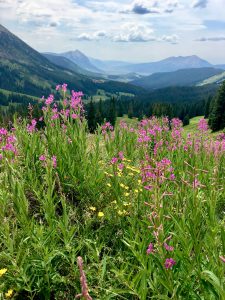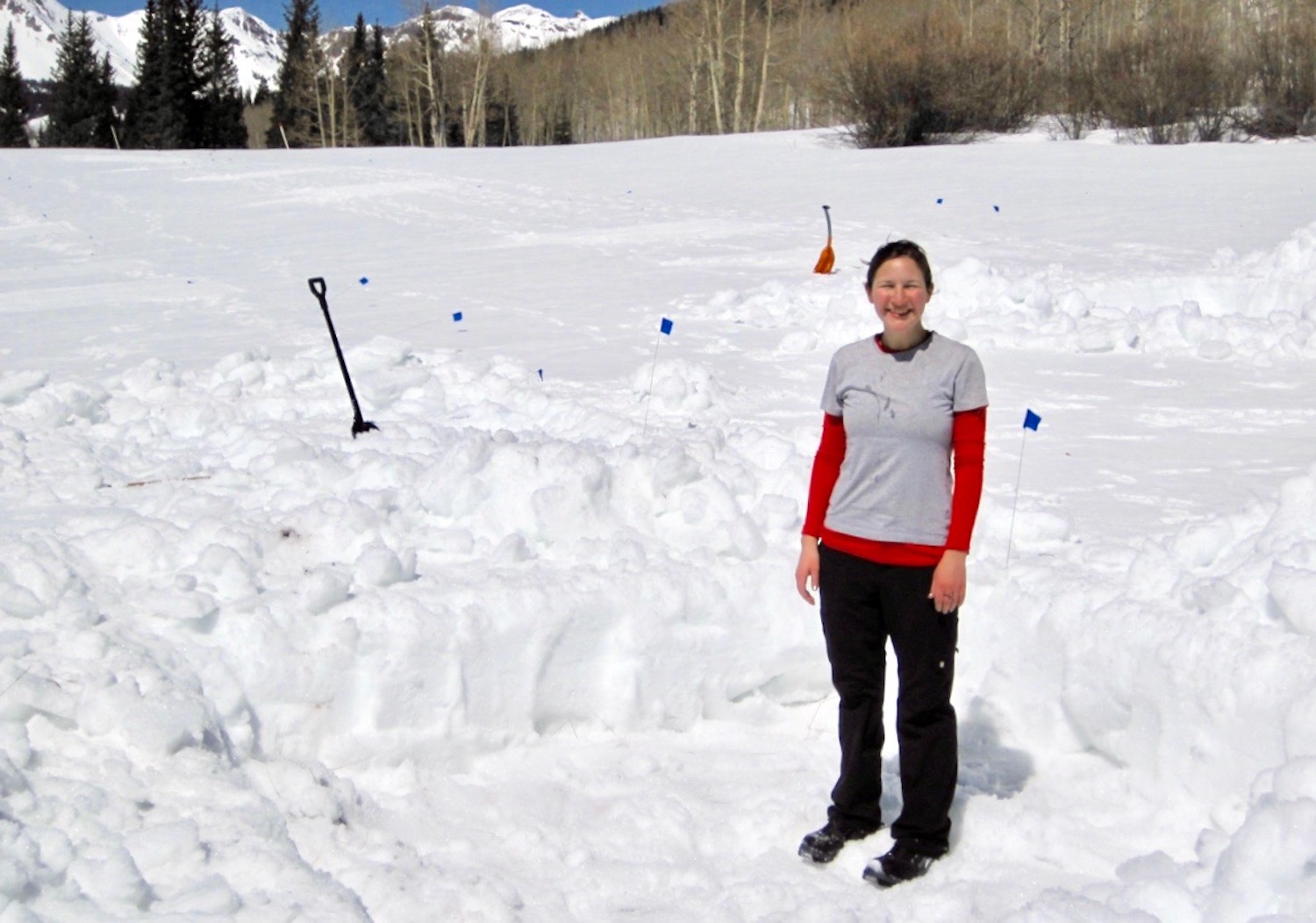
I toppled a powerful nation’s economy, wooed the god of the underworld, cost newlyweds thousands of dollars every year, and am right outside your front door. Who am I?
Wildflowers.
Wildflowers have played starring roles in all human history across continents and cultures, and are still used today to punctuate milestones in our lives. While our fascination is purely superficial, wildflower blooms are critical to ecosystem health and a matter of life or death for the many species that rely on them. With July set to be the hottest month ever measured on Earth (beating the previous record set just two years earlier by July 2017), wildflowers–like all species–are experiencing new environmental challenges, but none more so than those who inhabit the mountains.

According to the USGS, the northern Rockies are warming three times faster than the global average rate. Winter snowpacks melt 3.5 days earlier every 10 years, exposing wildflowers to the vagaries of spring weather. The end of the snowmelt in June starts the clock on the wildflower’s race to bloom and reproduce before the snow returns as early as September. Alpine wildflowers flourish in this brief season by operating in sync with both the elements and pollinators to achieve optimal reproduction rates. However, the snowmelt clock is being set earlier and earlier every year. Will rathe wildflowers adjusting to warmer alpine climates reproduce as well or will they fall out of sync? The answer involved 9,680ft of elevation and a literal ton of snow shoveling.
Applied Ecology alum and Global Change Fellow Dr. Gabriella L. Pardee headed to the Rocky Mountain Biological Laboratories (RMBL) in Gothic, CO to test how wildflower species are responding to earlier snowmelts. The RMBL was founded in 1928 and has served as a base of operations for several labs, including Applied Ecology’s Prof. Becky Irwin.

The team measured out forty 2x2m plots and shoveled snow from the experimental plots to mimic early snowmelts (shifting some ~1200lbs of snow per plot). Then, some of these uncovered experimental plots were left exposed to hard frosts while others were protected with standard frost blankets. The remaining plots were left covered in snow. Gabriella and her team monitored the growth rates of the four species in every plot throughout the spring, summer, and autumn, measuring; bloom timing, duration, pollinator visitation, and seed/fruit production.
All four species in the experimental plots bloomed earlier and for longer than the flowers in the unaltered plots–highlighting the wildflowers’ strong phenological link to snowmelt. The additional effects here on out were species-specific. Two of the four study species flower in early spring naturally, while the other two favor the mid-summer. The team found that the early-spring flowers suffered more frost damage and were visited less frequently by pollinators than the mid-summer flowers, which reduced how many seeds/fruit they produced. However, the mid-summer flowers did not suffer as much frost damage, even in the exposed plots, and were visited more often by pollinators and therefore produced more seeds.
“Our results suggest that we will see changes in montane flowering communities as snow continues to melt out earlier under climate change,” says Pardee. “While all species flowered earlier when we removed snow from our plots, we found that the species that flower earliest in the season (Claytonia and Mertensia) seemed to be at a disadvantage under climate change, while species that bloom later in the season (Delphinium and Potentilla) seemed to be at an advantage.”
2 responses on “Sky-high climate change reshapes wildflower communities”